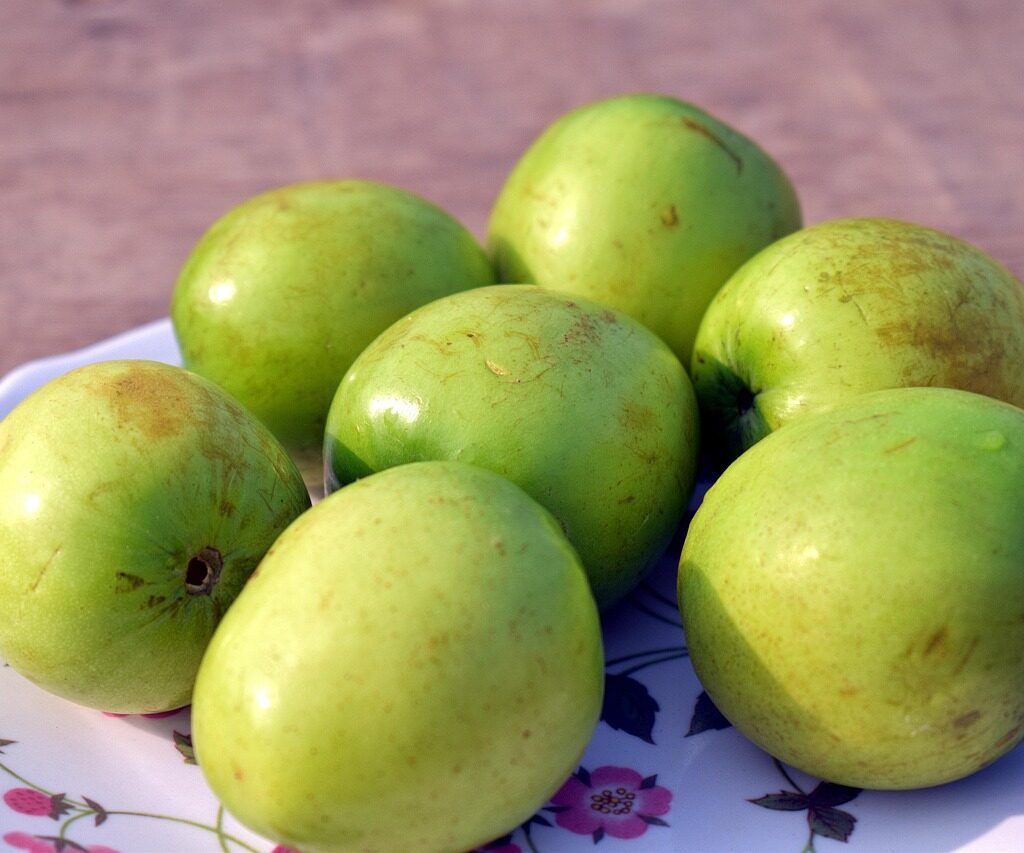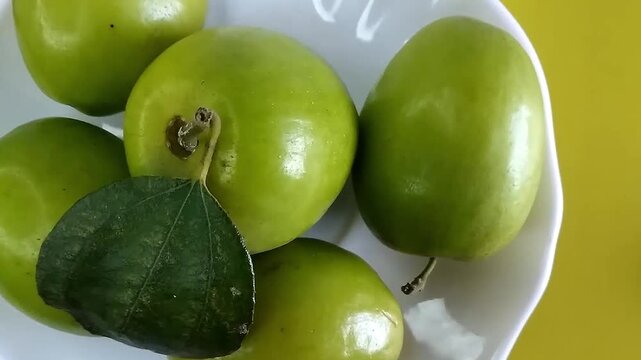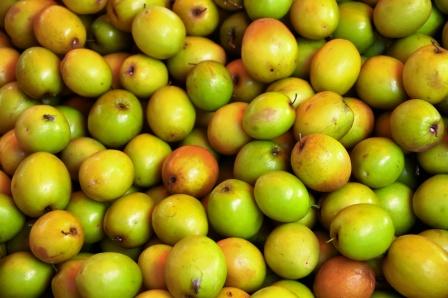The Indian jujube, known scientifically as Ziziphus mauritiana, is a hardy, fast-growing fruit tree native to South Asia. Loved for its crisp texture, tangy-sweet flavor, and exceptional resilience in arid conditions, this underrated fruit is an important dietary staple and cultural symbol in many parts of Asia. But where is this versatile fruit most abundantly cultivated? In this in-depth article, we trace the origins, cultivation trends, health benefits, and name the largest Indian jujube producer in the world.
What Is Indian Jujube?

Indian jujube, commonly known as ber in Hindi, bor in Marathi, badari in Sanskrit, and elanthai pazham in Tamil, is a tropical fruit-bearing tree from the Rhamnaceae family. It produces small to medium-sized, round or oval fruits that transition from green to yellow, orange, or red as they ripen. The flesh is crisp, juicy, and either tart or sweet, depending on the variety and stage of ripeness.
Not only is the fruit enjoyed fresh, dried, or pickled, but it’s also used in Ayurvedic medicine for its cooling, digestive, and restorative properties.
The Cultural and Historical Significance of Indian Jujube
Indian jujube has been cultivated in India for over 4,000 years and holds a prominent place in ancient texts, including the Vedas and Ayurvedic scriptures. The fruit is often associated with traditional festivals like Maha Shivaratri and Holi, where it’s offered to deities or shared as a ritualistic treat.
The hardy tree, capable of thriving in hot, dry climates, has also played a crucial role in rural food security by providing nutrition in resource-scarce regions.
The Largest Indian Jujube Producer in the World: India

Unsurprisingly, India is the largest producer of Indian jujube in the world. The fruit’s native status, cultural significance, and suitability for the country’s varied agro-climatic zones have helped maintain India’s leadership in its cultivation.
Why India Leads Indian Jujube Production
1. Native Habitat and Ideal Climate:
India’s semi-arid, tropical, and subtropical regions offer the perfect environment for Indian jujube trees. They flourish in areas with hot summers and scanty rainfall — typical of vast regions in western, central, and southern India.
2. Traditional Knowledge and Usage:
Generations of farmers have cultivated Indian jujube using traditional practices, selecting hardy, high-yielding varieties best suited for local soils and climates.
3. Diverse Varieties:
India boasts over 90 cultivated varieties of Indian jujube, including popular ones like Gola, Umran, Seb, Banarasi Karaka, and Chhuhara. This diversity enables growers to meet varying market demands.
4. Culinary and Medicinal Applications:
From fresh consumption to pickling, chutneys, jams, candies, and dried snacks, Indian jujube plays a versatile role in India’s culinary landscape. Its extensive use in Ayurvedic formulations adds to its demand.
5. Expansive Cultivation Regions:
Major producing states include Rajasthan, Maharashtra, Gujarat, Uttar Pradesh, Punjab, Haryana, Madhya Pradesh, Tamil Nadu, and Andhra Pradesh.
Other Major Indian Jujube Producers

While India is the largest producer, several other countries also cultivate Indian jujube on a commercial scale:
Pakistan:
In Pakistan, Indian jujube is grown widely in Sindh, Punjab, and Balochistan. It’s a popular fruit during the winter months and is consumed fresh or dried.
Bangladesh:
Bangladesh cultivates Indian jujube in home gardens and small orchards. Local varieties such as Apple Kool and BAU Kool are regionally famous.
Nepal:
Nepalese farmers grow Indian jujube in the Terai region, where its drought resistance and adaptability make it a valuable crop.
Thailand:
Known as “makham pom” in Thailand, Indian jujube is grown in northern and central provinces, typically consumed fresh or processed into pickles.
China:
Though China predominantly grows Chinese jujube (Ziziphus jujuba), the Indian jujube has gained popularity in southern regions for its resilience in subtropical climates.
Health Benefits of Indian Jujube
Indian jujube offers a remarkable range of health benefits:
- Rich in Vitamin C: Boosts immunity and promotes skin health.
- High Fiber Content: Aids digestion and helps manage cholesterol.
- Natural Coolant: Traditionally used to reduce body heat during fevers or hot summers.
- Antioxidant-Rich: Helps combat oxidative stress and supports liver health.
- Supports Sleep and Calmness: Traditionally consumed to relieve anxiety and insomnia.
- Promotes Blood Circulation: Its iron content aids in improving blood health.
Economic and Ecological Importance

Indian jujube trees contribute beyond just fruit production:
- Drought-Resistant Crop: Requires minimal water and thrives in poor soils.
- Livelihood Support: Provides income for marginal farmers in dry regions.
- Agroforestry Integration: Acts as a windbreak and soil conservation tool.
- Animal Fodder: Leaves and fruits serve as livestock feed.
- Medicinal Industry: Its leaves, roots, and fruits are widely used in Ayurveda and Unani medicine.
Challenges in Indian Jujube Production
Despite its benefits, Indian jujube production faces several challenges:
- Pest and Disease Threats: Susceptible to fruit fly, powdery mildew, and scale insect infestations.
- Post-Harvest Losses: The fruit’s short shelf life demands efficient transport and storage solutions.
- Lack of Organized Market Linkages: Much of the produce is sold in unorganized local markets.
- Limited Value-Addition Industries: Few large-scale jujube processing units exist, limiting economic potential.
Future Prospects

With rising global interest in underutilized, nutrient-rich fruits, Indian jujube has immense export potential. Countries in the Middle East, Southeast Asia, and African drylands could become significant markets for fresh, dried, and processed Indian jujube products.
The establishment of value-added industries like jujube jams, candies, pickles, herbal teas, and cosmetics could further increase profitability and create rural employment opportunities.
Conclusion
India’s favorable climate, native history, cultural significance, and agrarian traditions have established it as the world’s largest Indian jujube producer. From the deserts of Rajasthan to the orchards of Maharashtra, Indian jujube remains a crucial resource for food security, rural livelihoods, and traditional medicine.
While Pakistan, Bangladesh, Nepal, and Thailand contribute to global Indian jujube cultivation, India’s dominance in both production volume and market variety remains unparalleled. As awareness of its nutritional and medicinal benefits grows, Indian jujube is poised to secure a greater presence in international markets — a testament to its enduring value in both ancient and modern landscapes.



